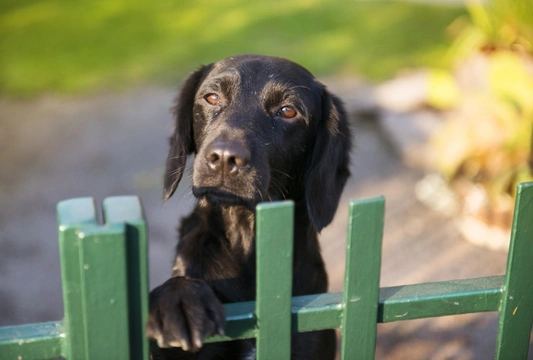
How to stop your dog escaping from the garden
One thing that most of us dog owners take for granted is being able to send our dogs out into the yard or garden to use the loo in the early morning or late at night, or to let the get some fresh air and play in between walks.
However, some dog owners can’t take these simple things for granted at all-and these owners are those whose dogs seem to have an almost magical ability to work their way out under or over the wall or fence when unsupervised, and take themselves off roaming around without supervision!
If this sounds like your own dog, the chances are that you’ve already had more than one heart-stopping or embarrassing moment, looking out into your garden at the empty space where your dog should be, or having to apologise to your neighbours when they suddenly appear at your dog with your pleased-looking dog and a tale of them having dug up the garden or chased their cats.
It is not always an option to simply ensure that your dog is never allowed into the garden unsupervised, and even if this is the status quo in your house, dogs are apt to get out into the garden at inopportune moments, whether you want them to or not-and so finding an effective way to secure your garden or yard from your dog’s escape attempts is important for many reasons.
In this article, we will share some tips and advice on how to secure your garden from an escaping dog, and other ways in which you can work with your dog to stop them making a break for it! Read on to learn more.
The type of fencing you use
What type of materials you use for your fence or wall can make all the difference between whether or not your dog can work their way out or not, and you may need to look at replacing or updating your existing boundary if your dog has got it sussed!
Walls are generally more effective than fences, but a high, straight fence that does not have footholds in it can also be effective-wire fencing such as chicken wire or heavy-duty alternatives are usually easy prey for escaping dogs, because they can get footholds in the wire!
Height above and below ground
If your dog is small and your fence very high, you may be at a total loss as to how your dog is getting out-and if they’re not climbing up chain link when your back is turned, they have probably sussed out an alternative method of beating your fence, in the form of going under it, not over it!
Dogs can usually work their way under wire with enough persistence, and if you have a solid fence or wall, they may well burrow down under it! This means that you should ensure that your fence is not only high enough to make climbing or jumping out impossible, but that it should also go at least a couple of feet under the ground too, or be accompanied by mesh underground to foil your dog’s attempts.
Tethering
Tethering your dog-tying them up when outside-is another option to look at, although there are some downsides to doing this. A dog that is tethered is usually one that is left outside for longer than a few minutes on their own, and so, the tether takes the place of proper supervision, which will likely lead to frustration and boredom in your dog, and a tendency to chew through their tether.
The tethering then leads to a false sense of security that the dog is safely enclosed, when in fact they may have got tangled up and hobbled themselves, or have chewed through the tether and be long gone!
Combatting boredom
In order to keep your dog in when they need to be, it is important to carefully consider what garden time means to your dog-is it a chance for them to go outside for half an hour and maybe do their business, or are you using it as a get-out when you don’t fancy walking them, or they are getting in the way?
Garden time should be a treat and something interesting for your dog, and not a form of free dog sitting-so make sure that your dog has fun when in the garden, and has plenty to do out there, to stop them from seeking ways to combat their boredom by escaping.
Exercise
Free time in the garden should never take the place of your dog’s regular walks, and if your dog tends to get out and go roaming, they are giving you a loud and clear message about this themselves!
Having a garden or outdoor space should enable you to provide an added means of entertaining and fulfilling your dog, not an alternative to proper walks and exercise-and a tired dog is much less likely to get bored and try to work their own way out!



